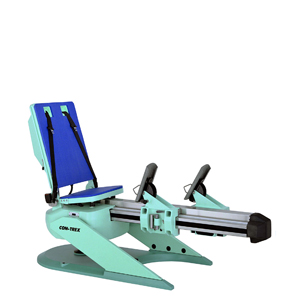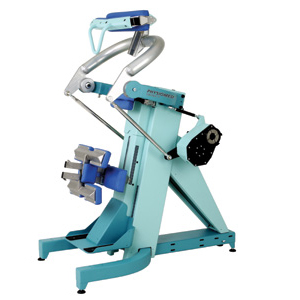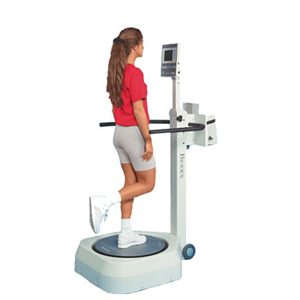

Snowboarding has been a part of the Olympic disciplines since the1998 winter Olympics in Nagano, Japan where the Half-Pipe (HP), in which competitors perform tricks while going from one side of a semi-circular ditch to the other and the Giant Slalom, a downhill event similar to giant slalom skiing, (which evolved to the Parallel Giant Slalom in 2002) were the first disciplines introduced. And it was in 2006, at the winter Olympics in Turin that the Snowboard Cross (SBX) made its first Olympic appearance.
Freestyle events include the Half-Pipe which consists of performing the most figures in a half cylinder and the Big Air which consists of a single jump where the athletes have no limit on the figures performed. The Parallel Giant Slalom opposes two snowboarders in parallel on two identical courses (Fig. 1). And finally, the Snowboard Cross opposes 4 surfers during a race filled with obstacles and turns in the manner of BMX competitions (see our article on this topic).
Due to this diversity of events, the physical and physiological requirements in Snowboarding can be very different depending on the specialties of each snowboarder. In order to better evaluate these requirements, the implementation of field or laboratory tests makes it possible to detect the discriminating parameters of the performance, to evaluate the training or to prescribe the changes that have to be made.
In 2009, a team of Austrian researchers set up and evaluated a battery of tests on 37 high-level snowboarders (16 women and 21 men), all disciplines combined (The "Freestyle" group was composed of men only). The objective was to determine if the chosen tests could be decisive for the performance in each Snowboard specialty.
Athletes passed 7 tests to assess strength, power, endurance and coordination characteristics :

Figure 2. Isokinetic Leg Press Con-Trex.

Figure 3. Isokinetic Trunk Module Con-Trex TP-1000.

Figure 4. Biodex Balance System.
The results of the 7 tests performed were correlated to F.I.S. points in the different disciplines and with the points obtained during the world cup. Moreover, to identify important variables for predicting snowboard performance, multiple regression analyzes were conducted.
The main results showed that the tests better described Snowboard performance in women than in men. Indeed, Table 1 shows correlations only in women. The only significant correlation found in men was between Half-Pipe performance and CMJ (r = 0.88, p < 0.05).
The maximal aerobic power on bicycle and unilateral isokinetic power tests of the lower limbs are the only ones to be significantly correlated with Parallel Giant Slalom performance and World Cup performance. While in Snowboard Cross, all tests except CMJ are significantly related to performance.

The statistics also highlighted that this battery of tests used in this study explained the performance for :
The main result of this study shows that the battery of tests put in place by this team of researchers seems better suited to women and the discipline of Snowboard Cross. In addition, the maximal push-off speed seems to be a determining parameter for the final performance. As for the BMX Race, the start is crucial for the final position (see our article on this topic).
In high-level sport, the parameters tested must be correlated to the performance. Therefore, the tests used will reflect the improvement in performance and quantify the effects of training. This is useful information for athletes and coaches. The battery of tests used in this study is experimental but it allows to take into account many physical and physiological parameters which are necessary for the performance in the various disciplines of Snowboard, in particular in Female Snowboard Cross. The researchers did not, however, justify the usefulness in Snowboard of all the parameters tested.
However, it is important to note that few snowboard studies have been published to date, and the criteria for performance in its various specialties remain to be clearly determined. Finally, in this study, the tests used require specific equipment that is not found in any laboratory or strength and conditioning facility. It would be interesting for different researches to determine the most representative tests of the performance but which would be easily reproducible in the training centers.
We remind you that you can quote articles by limiting your quotation to 200 words maximum and you must include a nominative link to this one. Any other use, especially copying in full on forum, website or any other content, is strictly prohibited. In doubt, contact us.
Copyright © 2011-2024 - www.sci-sport.com - All rights reserved